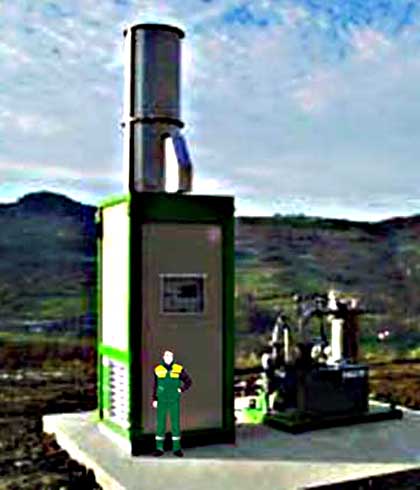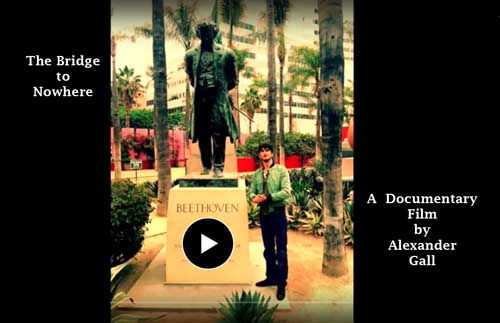HONEY TALKS ABOUT WHERE LOS ANGELES BEGAN, PART 3
NOTES FROM ABOVE GROUND
By Honey van Blossom
(Honey is a Belgian Marxist former strip-tease artiste)
Over the course of the summer of 1781, twenty-one men and women and twenty-three children walked from the San Gabriel Mission. They had been exposed to smallpox during the time they were in Baja California. They made the walk in small groups.
The two or three groups of colonists forded the Los Angeles River at the place where the Broadway Bridge now crosses it but then the river took a different path from the channel created for it by the United States Army Corps of Engineers a century and a half later.
The river then was a real river, and beneath it through the land ran subsurface waters that sometimes broke through the earth in springs. Fish swam in the river. Herons with their long necks uncoiled cast shadows of their wings on the surface of the water.
The families reached a ledge or mesa or hill terrace above the river near the crossing place in the river. Native men arrived from the village of Yang Na about a mile and a half away and helped the settlers build jacals from sticks and reeds to live in for the next few years. Read more
Fireworks Flare; Music Underwhelms
Hyla Douglas, left, my daughter, along with Mayya Isaeva, our friend from Bulgaria,
waiting the lastly few moments before the fireworks go off.
BY LIONEL ROLFE
As the light faded on July 4, the Queen Mary’s stern deck grew increasingly crowded, terrifyingly so. The revelers waited for the fireworks. It was quite fancily awful—terrible rock music filled the darkening air. It filled the darkening air and the crowds were overwhelmed with tired faces and they all seemed to be going slower and slower.
As I said, it was the this month’s Day or Independence and perhaps it was appropriate that the British ship was a launching pad for our nation’s independence. The warm, terrible rock music gave the darkening air an odd feeling—the sea of tired faces were surreal. The musicians, if you want to call them that, had a DJ and Beach Boy music and it was terrible.
If you stood inside Sir Winston’s on the ship’s stern and looked out the windows, you could see revelers were descending into in a silliness maelstrom.
There had been somewhat more appropriate music along the mid deck. There was rodeo, County Western, HiP HoP, New Orleans country music, and other kinds of identity music. There also was a classic American dance musicale—all shapely women in snaky outfits, in a large dining room. The music was traditional and standard, a little too old fashioned. It had a certain jazzy quality, but without any wildness. A pair of dueling pianist played on two attached white piano bodies that were actually only electronic devices. Read more
UNINTENTIONAL SLAPSTICK AT THE HOLLYWOOD ROOSEVELT
By Bob Vickrey
It happened just about the same time as our waiter was asked by several young tourists at the adjoining booth, “Can you tell us where we could find this Hollywood sign that everybody’s talking about?”
Upon overhearing the innocent question, I let out a laugh at the very moment I bit into my fried egg sandwich, which in turn, dislodged the runny egg from the rest of the sandwich and then mysteriously disappeared from sight. I checked my lap to see where the missing egg had landed, but decided it must have hit the floor instead. My dining partners had a good chuckle about my clumsiness, which I quickly blamed on the three teenagers who had disrupted the timing and intricate dexterity it takes to handle a sandwich that was almost six-inches thick. Read more
The Bridge To Nowhere
This is a special video documentary about horses in Burbank and paradise in Hollywood produced by Alexander Gall. The film is produced by Alexander Gall. Music is by Beethoven. Doug Weiskopf is one of the talking homo sapiens as is Les Zador.
Community Scores Major Win as City Rejects Oil Company Plan for Gas Burner

24-foot-high CEB 800 gas burner with human figure to show scale. Zoning Administrator ruled that it belongs in an industrial zone, not next to homes and an AIDS clinic.
Leslie Evans
A three-year fight ended with victory for a West Adams community when Los Angeles Associate Zoning Administrator Charles Rausch on June 30 said no to an oil company’s plan to install a massive gas burner in a residential neighborhood. The case involved the Murphy Drill Site at 2126 W. Adams Blvd., owned by the Freeport-McMoRan Oil and Gas Company, a subsidiary of the world’s largest copper mining company.
The Murphy site operates 22 active oil wells on 3.25 acres of land leased from the Catholic Archdiocese of Los Angeles. The drill site is surrounded by a convent, an AIDs clinic, an apartment house, and a string of single family homes. Read more
Honey Talks About Where Los Angeles Began. Part 2
NOTES FROM ABOVE GROUND
By Honey van Blossom
(Honey is a Belgian Marxist former strip-tease artiste)
Part 1 of “Where Did Los Angeles Start?” looked at the primary Tongva trading village of Yang-Na, located about where the Los Angeles Civic Center is today. Part 2 describes Los Angeles as the first emigrants from the United States saw the pueblo (until 1835) and then as they saw the city (after 1835).
In Edgar Allen Poe’s short story “The Case of The Purloined Letter,” police detectives search for a stolen letter. They look behind wallpaper and examine tables and chairs with magnifying glasses, but they cannot find the stolen letter in the hotel room where the blackmailer/thief stays. The fictional private detective C. August Dupin later finds the letter hidden in plain sight hanging on a ribbon used to hold letters but with a handmade envelope that had nothing to do with the letter inside.
The website for Olvera Street calls it “the first street in Los Angeles.” It wasn’t. The first streets were called “o” and “n.” Olvera Street was called Wine Street until 1877. If you drive to that tourist marketplace called Olvera Street today along Sunset headed towards Terminal Annex, however, a road sign next to the market place states, “Olvera Street. Established 1930.” The city both misleads you and sets you straight.
California historians place the original pueblo proper (the plaza and surrounding structures) in different places: on top of the Indian village of Yang-Na, at El Aliso, the giant sycamore, “behind Union Station,” around the Twin Towers jail on Vignes, and on the hill a bit above the present pueblo at about Parking Lot No. 2. A couple of writers gave up trying to figure it out. Read more






